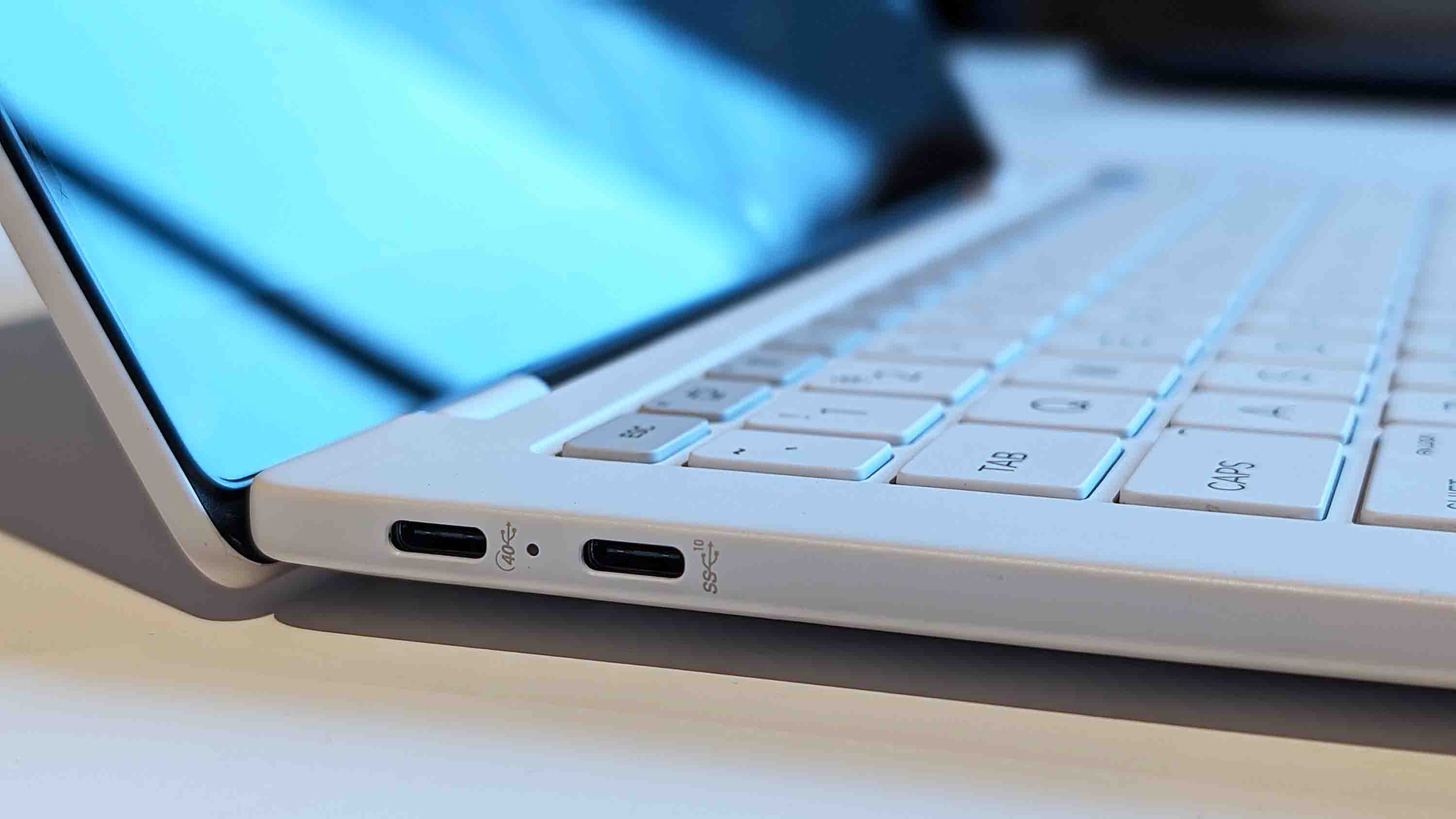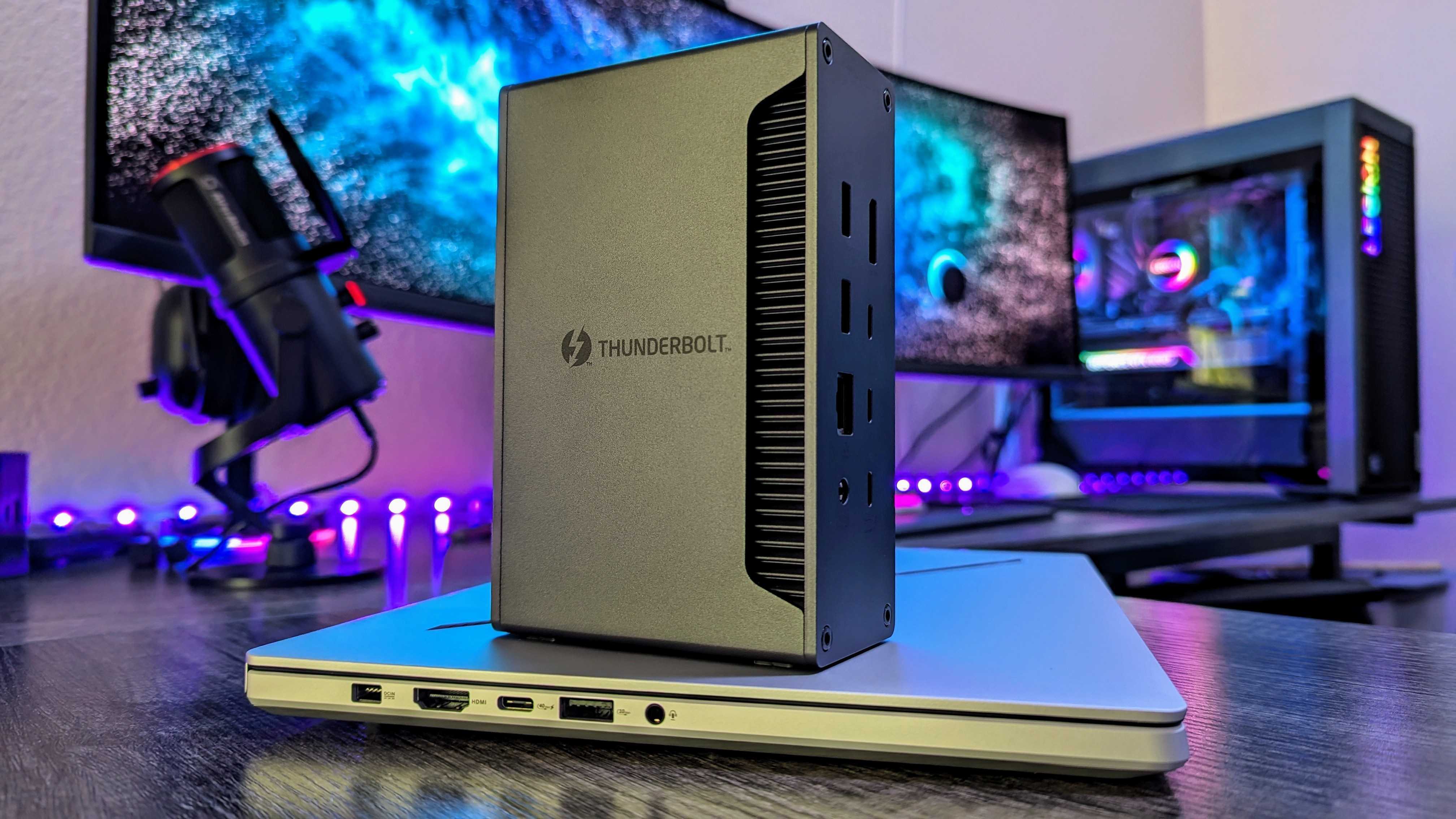Do Windows on ARM PCs support Thunderbolt 4 or 5?
Windows on ARM is making a big comeback, but will we lose access to Thunderbolt?

Can I use Thunderbolt with my Windows on ARM PC?
No, Windows on ARM PCs aren't likely to feature Thunderbolt ports, but that does not mean you can't use Thunderbolt accessories. Many future Windows on ARM PCs are expected to boast USB4 ports, which can be cross-compatible with Thunderbolt 3, 4, and even 5 hubs, docks, and accessories. However, this depends on the specifications of the USB4 port.
A major revival for Windows on ARM is on the horizon thanks to the advent of impressive new tech from Qualcomm and Microsoft, and the advantages (at least on paper) are exciting enough to entice a lot of potential buyers. However, will those leaving Intel behind also need to give up the vast, comprehensive ecosystem of Thunderbolt accessories and peripherals?
On the surface, it seems like the answer is "yes." After all, non-Intel computers powered by AMD or Qualcomm hardware don't often use the Thunderbolt standard, as it's owned by Intel itself. However, there's a savior for people interested in Windows on ARM: USB4. The latest generation of USB Type-C ports is now appearing on new computers, and it can work with existing Thunderbolt accessories. Emphasis on "can," because there's unfortunately a caveat.
ARMing PCs with powerful USB ports

Thunderbolt is incredibly powerful, allowing you to expand your Windows PC with more ports, more displays, more storage, and even more graphical power. Built on top of the USB Type-C connector and certified after meeting strict requirements, Thunderbolt is a potent tool that many professionals and creatives rely on. It's also available on the majority of new Windows PCs being sold today — and almost all of those PCs have Intel hardware inside.
The new wave of Windows on ARM Copilot+ Windows PCs may seem at risk of losing access to Thunderbolt because of this, but we've already seen new Windows on ARM PCs boasting USB4 ports, which can do all the same things in theory. We have an in-depth explainer on USB4, as well as explainers on Thunderbolt 4 and Thunderbolt 5. If you'd like to skip to comparing USB4 and Thunderbolt, we have that, too.
The summary is that USB4 has the upgraded capabilities and bandwidth to use Thunderbolt peripherals because it was built off the (now) open-source Thunderbolt 3 standard. However, there are multiple versions of USB4, and not all are made equal. We have an in-depth guide on using Thunderbolt accessories with USB4 ports, and you should absolutely check that guide out for a more thorough explanation. If you're considering a new PC powered by Qualcomm's Snapdragon X series of systems-on-chip (SOCs), you'll need to be aware of if it has USB4 ports and how much bandwidth those ports have.
Thunderbolt 4 has a bidirectional bandwidth of 40GBps and unidirectional bandwidth of 80GBps, so you'll need a USB4 port marked with the USB 40GBps label. Thunderbolt 5 increases those bandwidth numbers to 80GBps and 120GBps, respectively, so you'll need the USB4 port marked with the USB 80GBps label (both Thunderbolt 5 and USB4 2.0 are still incredibly rare and expensive, so no need to worry about this too much). Compatibility isn't totally guaranteed, but USB4 ports can be just as capable as Thunderbolt without relying on Intel.
Windows on ARM PCs can be thinner and lighter, last far longer, and have just as much power as traditional Intel and AMD PCs thanks to the Snapdragon X Plus and X Elite SoCs, making them incredibly attractive options for many people. You can keep an eye on our list of the best Windows on ARM PCs for the greatest options in the space, especially if you need to ensure you don't lose Thunderbolt compatibility when making the jump to ARM.
Get the Windows Central Newsletter
All the latest news, reviews, and guides for Windows and Xbox diehards.

Zachary Boddy (They / Them) is a Staff Writer for Windows Central, primarily focused on covering the latest news in tech and gaming, the best Xbox and PC games, and the most interesting Windows and Xbox hardware. They have been gaming and writing for most of their life starting with the original Xbox, and started out as a freelancer for Windows Central and its sister sites in 2019. Now a full-fledged Staff Writer, Zachary has expanded from only writing about all things Minecraft to covering practically everything on which Windows Central is an expert, especially when it comes to Microsoft. You can find Zachary on Twitter @BoddyZachary.
